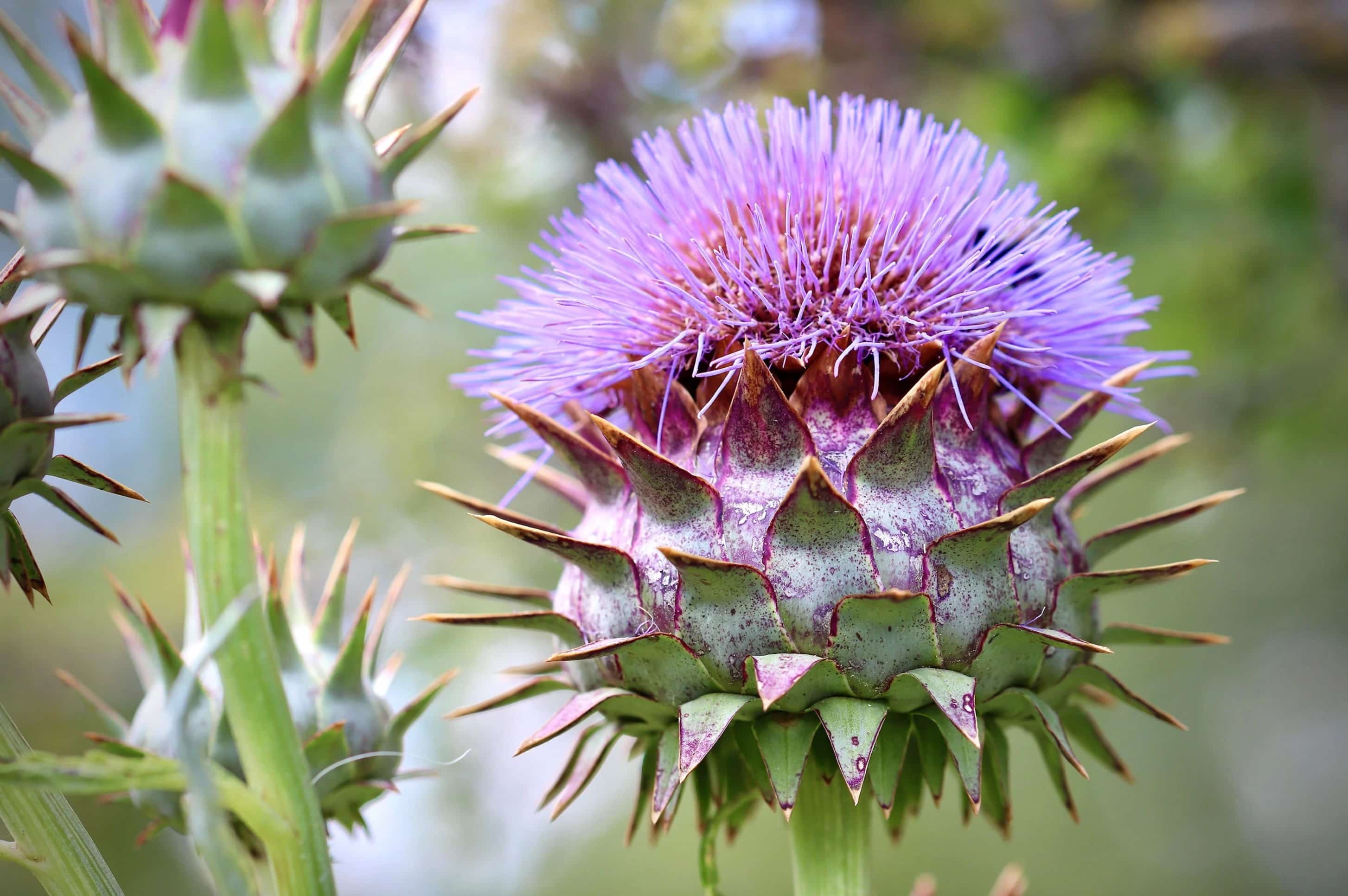
Cardoon, a lesser-known cousin of the artichoke, often piques curiosity with its unique appearance and taste. Originating from the Mediterranean, this thistle-like vegetable boasts a rich history and a variety of uses. But what exactly makes cardoon special? Cardoon stands out due to its nutritional benefits, culinary versatility, and intriguing cultivation process. Whether you're a gardening enthusiast, a food lover, or just someone interested in expanding your vegetable knowledge, cardoon offers something for everyone. From its distinctive flavor to its health benefits, this plant is more than just a pretty face in the garden. Ready to learn more about this fascinating plant? Let's dive into 20 intriguing facts about cardoon that will leave you eager to try it in your next meal!
Key Takeaways:
- Cardoon, a Mediterranean vegetable, is rich in fiber, low in calories, and packed with vitamins and minerals. It's a versatile ingredient in traditional dishes and has been used for centuries for its medicinal properties.
- Cardoon, also known as Cynara cardunculus, has a rich history and cultural significance, with mentions in ancient texts and symbolism in Greek culture. It can grow up to 5 feet tall and is a favorite among bees in the garden.
What is Cardoon?
Cardoon, a thistle-like plant, is often overshadowed by its cousin, the artichoke. However, this Mediterranean native has a lot to offer. Here are some intriguing facts about cardoon that might surprise you.
-
Cardoon's Scientific Name: The scientific name for cardoon is Cynara cardunculus. It's part of the Asteraceae family.
-
Edible Parts: Unlike artichokes, the edible parts of cardoon are its stalks, which resemble celery but have a unique, slightly bitter taste.
-
Ancient Cultivation: Cardoon has been cultivated since ancient times, particularly in the Mediterranean region. It was a favorite among the Greeks and Romans.
Nutritional Benefits of Cardoon
Cardoon isn't just tasty; it's also packed with nutrients. Let's explore its health benefits.
-
Rich in Fiber: Cardoon is high in dietary fiber, which aids digestion and helps maintain a healthy gut.
-
Low in Calories: This vegetable is low in calories, making it a great addition to weight-loss diets.
-
Vitamins and Minerals: Cardoon is a good source of vitamins C and K, as well as essential minerals like magnesium, potassium, and calcium.
Cardoon in Culinary Uses
Cardoon's unique flavor and texture make it a versatile ingredient in various dishes. Here are some ways it’s used in cooking.
-
Traditional Dishes: In Italy, cardoon is often used in traditional dishes like bagna càuda, a warm dip made with garlic and anchovies.
-
French Cuisine: The French use cardoon in gratins and soups, where its flavor can shine through.
-
Spanish Cooking: In Spain, cardoon is a key ingredient in stews and casseroles, adding a distinct taste and texture.
Growing Cardoon
Interested in growing your own cardoon? Here are some facts to help you get started.
-
Climate Requirements: Cardoon thrives in warm, sunny climates and prefers well-drained soil.
-
Planting Season: The best time to plant cardoon is in the spring, after the last frost has passed.
-
Maintenance: This plant requires regular watering and occasional fertilization to grow well.
Cardoon's Medicinal Uses
Beyond the kitchen, cardoon has been used for its medicinal properties for centuries. Here’s how it can benefit your health.
-
Liver Health: Cardoon contains compounds that support liver function and detoxification.
-
Antioxidant Properties: The antioxidants in cardoon help combat oxidative stress and reduce inflammation.
-
Digestive Aid: Traditionally, cardoon has been used to treat digestive issues like indigestion and bloating.
Cardoon in History and Culture
Cardoon has a rich history and cultural significance. Let’s delve into its past.
-
Symbolism: In ancient Greece, cardoon was a symbol of love and beauty.
-
Historical Texts: Cardoon is mentioned in various historical texts, including the writings of Pliny the Elder, a Roman author and naturalist.
-
Cultural Festivals: Some regions in Italy and Spain celebrate cardoon with festivals, showcasing its culinary and cultural importance.
Fun Facts About Cardoon
Here are some fun and quirky facts about cardoon that you might not know.
-
Giant Plant: Cardoon can grow up to 5 feet tall, making it quite an impressive plant in the garden.
-
Bee Magnet: The flowers of the cardoon plant are highly attractive to bees, making it a great addition to a pollinator-friendly garden.
Cardoon: A Unique Plant Worth Knowing
Cardoon, with its striking appearance and rich history, stands out in the plant world. This thistle-like vegetable, related to the artichoke, has been cultivated for centuries. Its edible stalks and leaves offer a unique flavor, often compared to a mix of celery and artichoke. Beyond its culinary uses, cardoon has medicinal properties, aiding digestion and liver function. Its vibrant flowers attract pollinators, making it a favorite among gardeners.
Growing cardoon requires patience and space, but the rewards are worth it. This plant thrives in Mediterranean climates, needing plenty of sunlight and well-drained soil. Whether you're a gardener, a cook, or just someone who loves learning about unique plants, cardoon offers something special. So next time you see this spiky, silver-green plant, you'll know it's more than just a pretty face. It's a piece of history and a culinary delight.
Frequently Asked Questions
Was this page helpful?
Our commitment to delivering trustworthy and engaging content is at the heart of what we do. Each fact on our site is contributed by real users like you, bringing a wealth of diverse insights and information. To ensure the highest standards of accuracy and reliability, our dedicated editors meticulously review each submission. This process guarantees that the facts we share are not only fascinating but also credible. Trust in our commitment to quality and authenticity as you explore and learn with us.


